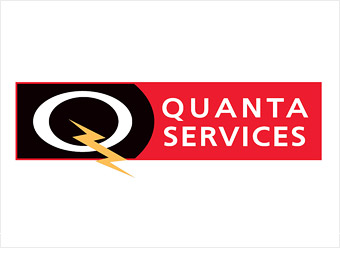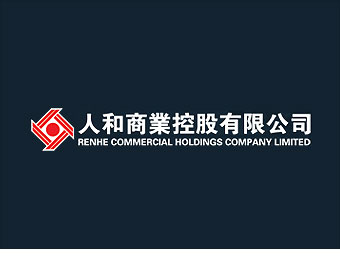Quanta

Ticker: PWR
Market cap: $4.1 billion
2008 revenue: $3.8 billion
P/E ratio: 19*
Dividend yield: None
The recession delayed countless projects intended to upgrade America's aging power grid. But now the federal government is unleashing billions for smart-grid and renewable-energy projects, and Quanta Services is positioned to benefit.
Quanta is the largest contractor in the U.S. electric power market. It specializes in constructing and maintaining high-voltage electrical transmission lines.
As utilities with shrinking workforces increasingly outsource projects, Quanta's revenue more than doubled in the past four years.
"Quanta is a play on the reliability of the system," says Charles Ober, longtime manager of T. Rowe Price's New Era Fund, which bought Quanta shares this year.
J.P. Morgan analyst Scott Levine says now is a buying opportunity. Spending on transmission projects is forecast to nearly double from 2008 to 2012, and many of those deals are being negotiated in 2010.
"Transmission is the best bet in the near-term," says Levine, who thinks Quanta is positioned to win big contracts in 2010.
Shares fell to $16 in February after utilities delayed spending amid the credit crisis and have since rebounded to $20.
But at 19 times forward earnings, the stock trades well below its five-year average of 27 times earnings, since investors still worry that Quanta's work might be delayed even longer. Analysts predict earnings per share will increase by 30% next year.
The long-term future looks even more promising. In addition to grid spending, which the Brattle Group, a research firm, estimates will total $1.5 trillion to $2 trillion between now and 2030, Quanta will prosper as its transmission lines carry electricity from renewable energy projects like wind and solar farms.
Buoyed by the government's stimulus loan guarantee program for renewable projects, Quanta expects such sales to nearly triple to $300 million in 2010.
CEO John Colson also figures Quanta's recent acquisition of Price Gregory, the country's largest gas pipeline builder, will drive profits in two to three years as natural gas in remote shale formations increasingly needs to be moved across the U.S.
"We haven't been as bullish on the natural-gas market as we are today," he says. "That's going to spur growth over the next several years."
Salesforce.com

Ticker: CRM
Market cap: $8.1 billion
2008 revenue: $1.1 billion
P/E ratio: 75*
Dividend yield: none
The popularity of "software as a service" is white-hot these days, and no provider is more identified with the business of renting software via the Internet (rather than selling and installing it on a company's servers) than Salesforce.com.
In part that's a tribute to the promotional powers of founder Marc Benioff. But it also stems from the fact that its products are widely viewed as appealing and easy to use.
Salesforce.com has lured in giant clients, including American Express, Avon, and Motorola. And the once-tiny outfit signed up 4,700 new customers during the last quarter, raising its total to 67,900.
"Salesforce is gaining against software companies like Oracle, Microsoft, and SAP because it is so much cheaper to use software in a cloud than to pay for a seven- or eight-figure software licensing deal," says longtime tech bull Ryan Jacob, who runs Jacob Asset Management and whose fund owns shares of the stock.
"Not only is that cost-benefit [equation] great in a weak economy," he says, "but as more companies use Salesforce and other software-as-service providers, this will become the standard model for companies with business software needs."
Salesforce is nobody's idea of a value play. It's a classic high-growth, high-price stock for those who want to buy into the premier player in an escalating tech trend.
Salesforce recently reported blowout third-quarter earnings, including revenue that jumped 20% and earnings that doubled from a year ago. Wall Street analysts anticipate annual earnings growth of about 16% for the next two years. The company has more than $1 billion in cash, or about $8.50 in cash per share.
But one metric slipped, and that worried investors: Deferred revenue, a measure of subscription fees booked for coming quarters, was down a bit from the previous quarter (though it has still risen this year).
Some shareholders took that as a sign that the company can't maintain its growth rate, and the stock slid 6%. It still commands a posh P/E of 75 -- but that's not outlandish for a tech stock. Some money managers say the recent slip helped reduce unrealistically high performance expectations for the company.
Michael Nemeroff, an analyst at Wedbush Securities, is comfortable with the stock's valuation. "Salesforce books expenses for getting a new customer upfront, and then recognizes the revenue from that new business over one to three years."
The result: Earnings are depressed in the near-term and then jump later. And Nemeroff expects reliable growth. "There are few companies where you saw growth in revenues and profit margins over the last year, and Salesforce was one of them."
American Tower

Ticker: AMT
Market cap: $16.4 billion
2008 revenue: $1.6 billion
P/E ratio: 51*
Dividend yield: none
The conventional way to play the smartphone trend is to buy shares of handset makers like Research in Motion and Apple, both of which have soared in recent years.
BlackBerrys and iPhones are likely to continue flying off the shelves -- but they're useless without service, which in turn depends on wireless tower operators. That's where the industry leader, American Tower, comes in.
Because people are using their phones for increasingly complex tasks, burgeoning data consumption is straining carriers like AT&T. To relieve their networks and install new technologies like 4G, telecoms need companies like American Tower.
The company's business model is simple: It owns 26,000 towers around the world and leases space to carriers, who sign multiyear contracts that come with annual price escalators. Because of zoning laws, American Tower controls large territories without threat of competition.
Three companies dominate the industry. American Tower is not only the biggest but also the best managed, according to Oppenheimer analyst Timothy Horan.
The company boasts higher profit margins than its competitors. And it has the lowest debt-to-capital ratio in the group, leaving it cash to buy operators overseas, where it does about 15% of its business. According to Horan, wireless penetration in emerging markets is still low: 34% in India and 67% in Mexico.
At first glance the valuation looks frothy: Its forward P/E is 51. But David Rainey, manager of the FBR Focus Fund, argues that American Tower's P/E doesn't capture its value because accounting standards require it to overstate the depreciation of its towers.
Using price to free cash flow, which Rainey contends better represents its growth potential, American Tower is trading at a forward multiple of 17, on par with its more sluggish peers.
For fans of the stock, the business case for American Tower more than justifies the valuation.
"They're a prime bottleneck right now for mobile devices," says Eric Fischman, manager of the MFS Growth Fund, which owns shares. "Follow the bottlenecks."
Renhe

Ticker: HK:1387
Market cap: $4.4 billion
2008 revenue: $439 million
P/E ratio: 6*
Dividend yield: 6%
To say that Renhe Commercial Holdings has an unusual line of business would be an understatement: The Harbin-based company develops air-raid shelters in China -- on behalf of the Chinese government -- that double as underground shopping bazaars.
It may be an obscure little company -- smaller than we'd usually recommend -- but Renhe has been building these sanctuaries/malls for nearly two decades, and they have proved very lucrative.
In 2007 revenue increased by 125% and profits jumped 450%, according to analyst reports. Revenue skyrocketed 732% in 2008, with earnings up 614%.
Those rates will ease, but analysts still expect turbocharged expansion. A Bank of America/Merrill Lynch report predicts that earnings will leap by nearly 100% in 2009 before moderating to about 30% growth for the next two years. Despite these gaudy results, the shares trade at a bargain six times 2010 earnings.
"There are two things keeping the valuation so low," says Brett Johnson, who manages the Grubb & Ellis AGA International Realty Fund. "The company only recently listed, and the story is very hard for traditional real estate analysts or retail analysts to understand."
As long as you believe the Chinese government will continue to want air-raid shelters -- and there is no sign to the contrary -- Renhe has a hard-to-beat business model: Its facilities fall under the auspices of the Civil Air Defense department, so there is virtually no competitive bidding to secure projects.
Renhe makes no land payments, so it has no debt. The company is able to lease space or sell 40-year operating rights to the shop stalls, and Bank of America research says that it typically can cover the full development costs of the project if it sells 20% to 30% of the operating rights. Occupancy rates on its projects are about 100%.
Renhe has built or has approval to build more than 1.2 million square meters of space and sees potential for up to 5.8 million more. Finally the shares, which trade in Hong Kong but can be purchased through Schwab or Fidelity, pay a dividend yield of 6%.
Vornado

Ticker: VNO
Market cap: $11.5 billion
2008 revenue: $2.7 billion
P/E ratio: 14*
Dividend yield: 4.1%
The collapse in commercial real estate has caused cascades of misery, with rents, property values, and occupancy rates dropping amid a massive refinancing wave.
Debt-strapped owners will soon begin unloading properties in distress, experts say, creating opportunities for stronger real estate investors -- like Vornado Realty Trust -- to scoop up bargains.
Vornado, says Barclays Capital analyst Ross Smotrich, is one of the few real estate investment trusts (REITs) that can grow in the next year or two, through both its existing portfolio and acquisitions.
"The next 12 months are a unique opportunity for commercial real estate," says Dennis Yeskey, a managing director and restructuring specialist in Alix Partners' real estate practice. "No doubt there will be more losses, write-downs, rent declines, and bank failures. On the other hand, we haven't built anything new other than condos. If you have cash and cost controls, can roll your debt, and have great management, this downturn is a once-in-a-lifetime investment opportunity."
Thanks to a stable portfolio of buildings and billions in cash, Vornado is poised to take advantage of the slump.
For starters, its core investments have held up remarkably well and look as if they will continue to do so, thanks to Vornado's large and diverse portfolio, which reduces the chance that any one tenant could drag down Vornado's results.
Its top five tenants make up less than 13% of annualized revenue, according to Morningstar. Vornado owns office portfolios in Washington, D.C. (the federal government is a reliable tenant that accounts for 6.8% of Vornado's revenue), and New York City, as well as 163 retail properties in the U.S. and Puerto Rico, and the Merchandise Mart in Chicago.
Vornado posted profits in all segments in its most recent quarter and exceeded analysts' expectations. Its balance sheet grew stronger after the company paid down a line of credit this year. It now has about $3 billion in cash and $1.5 billion in credit capacity that it can use to fund deals.
And in contrast to some competitors, its debt burden is more than manageable. Vornado has about $1.2 billion due by the end of 2010. That represents 10% of Vornado's total debt, and analysts think that it will have no trouble refinancing.
The stock is trading at $65, a far cry from its $134 peak during the real estate bubble. That puts it at 14 times 2010 earnings estimates, below the S&P average. Earnings are expected to grow 30% in 2010, according to Morningstar, and 5.5% annually over the next five years; the shares pay a 4.1% dividend yield.
"Vornado should trade at a premium," argued Smotrich in a recent report. Noting that its "core property operations continue to hold up well," he cited Vornado's "liquidity," "proven access to capital," and its "opportunistic focus" as reasons for the stock to command a higher value.
The greatest risk for Vornado would be a decline in its New York City holdings, which make up a third of its income, according to a recent analyst note by John Perry at Deutsche Bank. But that doesn't seem to be happening so far.
In Vornado's most recent quarter, occupancy in the Big Apple remained strong at 96% -- a surprise to analysts who expected more deterioration in that market. And with its New York base relatively solid, Vornado will be able to pounce on a large selection of bargains.
0 comments:
Post a Comment